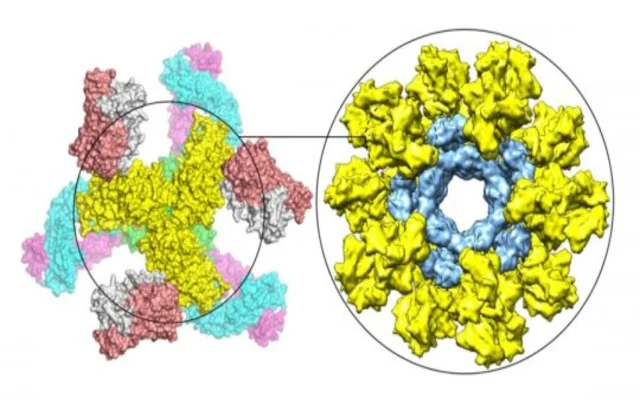5:14 PM Scientists have suggested a fresh promising strategy for vaccination against HIV | |
The new HIV vaccine candidate from Scripps Research overcomes technical obstacles that hampered previous vaccination efforts and initiates a strong response to HIV antibodies in animal studies. The latest vaccination strategy, described in the "merit of science" document of 23 November, is based on the HIV Env envelope protein. This difficult, shape-altering molecule, as you know, is not easily performed in vaccines in this way, in order to cause the necessary immunity to HIV. Not least, scientists at Scripps Research have found a simple, elegant way to stabilize Env proteins in the desired form, including for all kinds of HIV strains. Placed on virus-like particles to mimic an entire microbe, stabilized Env proteins caused reliable HIV antibodies in mice and rabbits. Candidate vaccines based on this strategy are currently being tested on monkeys. "We see this new alignment as a complete conclusion of the long - standing tasks of developing a vaccine against HIV," says key researcher Jiang Zhu, associate Professor of integrative structural and computational biology at Scripps Research. Copies of Env examine the plane of HIV; their key function is to capture host cells and get into them in order to stimulate infection. Because Env plays a crucial role in infection and is considered a viral structure with a large impact on the immune system of the infected owner, It has been a key goal of vaccination efforts against HIV. The idea was to instill in people a whole protein Env or its subunit, in order to initiate the creation of Env-binding antibodies, in the hope that these antibodies actually prevent HIV from infection of host cells in the future. So far, of course, no vaccine against HIV has been effective in large-scale clinical trials. Almost all scientists believe, in fact, that the vaccine against HIV has the ability to work, if it gives proteins Env immune system in this way, which recalls the form of env on a real virus before, as he infected the cell. But the correct representation of Env was a big challenge. On the HIV virus, Env protrudes from the viral membrane in impenetrable clusters of 3, called trimmers, and these difficult structures take structurally different forms before and after cell infection. Scientists vaccine opposite HIV, not paying attention to the years and 10 million dollars of experiments failed to find a broadly applicable way to stabilize Env trimers coveted preinfection form. "The conclusions on the stabilization of the trimer, which have been reported so far, have worked for several strains of HIV, but have not been generalized,"Zhu says. "Metastability of the Env trimer, as we called her, really was the Central challenge in the development of a vaccine for HIV on the basis of the opposite trimer." Zhu, trained as a biophysicist, found more of a solid conclusion of the difficulty of strength of Env, and in a note in 2016, he and his fellow Scripps said, in fact, that the change of the non-long, elastic section of Env under the title HR1 has the ability to arrange a trick-it allowed Env to remain in a pre-infectious, "closed" form. In a new study, he and his team have proven that this strategy really works for OCD trimesters of all kinds of HIV strains circulating in different areas of the world. This" raw optimized for prepuzio " (UFO) situation, as they are called, emit env trimers, which are stabilized in closed form and have a chance to be made effective, with remarkably little need for cleaning, the cell types typically used in biotech manufacturing. "By now, in my lab, we had created this transformation for the env of 30 to 40 different strains of HIV, and in most cases it worked like a charm," Zhu says. He and his co-workers further improved their own vaccination strategy, linking stabilized env-trimers at the gene level, up to 60 at a time, with individual microparticles representing the globular form of a whole microbe. This way, the molecule of the vaccine, and artificial and devoid of the genetic material for replication of the microbe, the immune system seems quite similar to the authentic the invading microbe and initiate more severe reactions. In mice, Zhu and his team noticed a sample of the vaccine Env-on-nanoparticles in just 8 months, which caused antibodies, which in laboratory studies safely neutralized the certainly circulating strain of HIV type, in front of which the previous candidate vaccines usually did not overcome. "This is the first time that every vaccine in front of an HIV candidate has caused such a welcome image of the antibody response in mice," Zhu says. Literally, for example, unprecedented results were obtained from rabbits, showing, in fact, that the alignment, based on microparticles, obviously exceeds the introduction of separated proteins Env - it is important to have a stronger reaction and prepares it much sooner. In real time, follow-up studies are being conducted on 24 monkeys at the state Institute of health-sponsored Southwestern state Primate center in San Antonio, Texas. Zhu and studies SCRIPPS licensed technology for the creation of a vaccine for HIV on the contrary, that a young firm, LTD Ufovax, which is a sponsor of the conducted tests. "At the moment we are testing 2 vaccines-candidate based on env-trimers from different strains of HIV, and another third vaccine-candidate, which gives a cocktail of 3 vaccines based on Env",-says JI Lee, General Director of Ufovax. "We believe that this new alignment gives an authentic breakthrough later 30 years of studies of the vaccine against HIV." | |
|
| |
| Total comments: 0 | |
